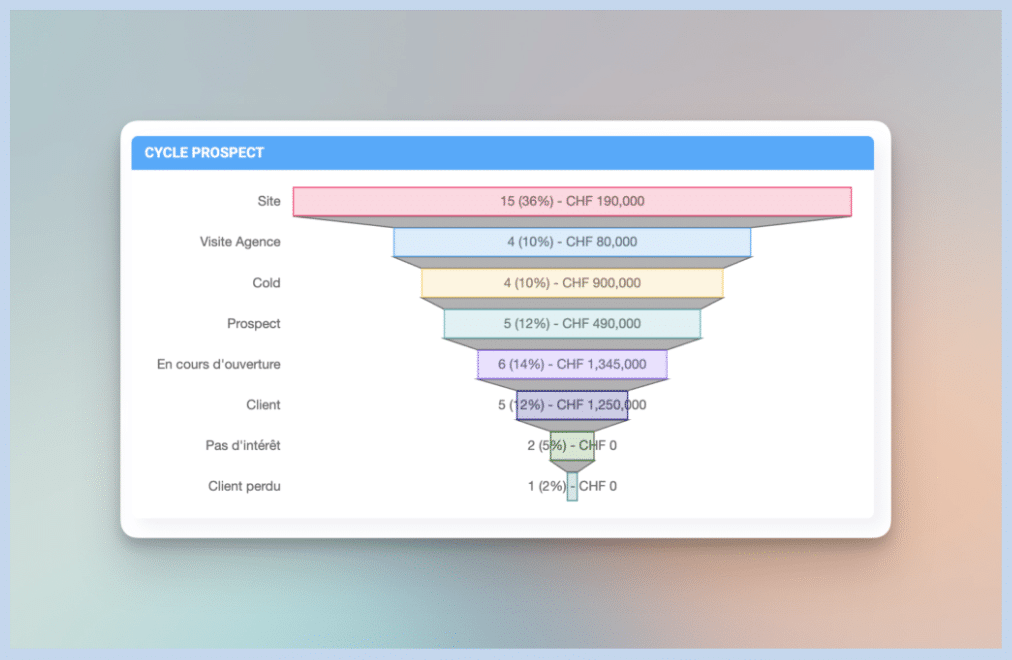The 5 steps of a Successful Sales Cadence

An effective sales cadence can increase response rates by 30-50% and boost average sales performance by over 20%. According to research from HubSpot, sales teams with a structured outreach process perform 35% better than those without a defined strategy. To maximize effectiveness, a successful sales cadence typically consists of five key steps: identifying target customers, selecting outreach channels, creating a contact schedule, optimizing messaging, and tracking & adjusting based on real-time data. When executed correctly, this process helps sales teams maintain persistence without overwhelming potential customers, ultimately improving conversion rates and closing deals faster.
This blog post will show you the five steps to a successful sales cadence. A sales cadence is an outbound sales strategy with automated series of emails that are sent over a period of time in order to nurture relationships, generate leads, and close deals. If you’re interested in using email marketing in your sales strategy for your business and want to learn what it takes, this article is for you!
Below are the 5 most important steps, every sales team should follow in order to maintain a good sales cadence.
Step 1. Research and define your sales cadences
In order to build a proper sales cadence, you need to first identify what channels are available to you. You can approach your prospective clients through email, phone call, SMS, or social media. Before you find the perfect balance between these communication channels you need to clearly state the purpose of this sales campaign in order to define what is the objective of this sales effort. An in-depth research of your target audience and its pain points is very important since only through this research you will be able to achieve a winning sales cadence with positive results.
Step 2. Identify the contact points of your sales process
When you have achieved a clearly defined sales cadence, it is time to select your contact points. These should be spread in 5-6 different nudges through your multiple channels that will inform your prospect about your solutions. These nudges should include an informative touch and an actionable touch in order for your prospect to be informed about your products and why you get in touch with them, and afterward to be able to take action, for example, visit your website or take advantage of a discount or reply back to you with further information.

Step 3. Provide training to your sales teams
In order to achieve deeper engagement with your prospects, you need to train your sales reps team to be ready for the communication with your prospects. At first, you need to find a sales rep team that will be trained adequately to understand the product and solutions so that they are able to communicate this to the prospects in every step of the sales cadence. The sales managers should be able to supervise the sales activities and identify all elements that need improvement.
Step 4. Find the best content for your touchpoints
In an effort to build your own successful sales cadence, you need to put extra attention to the touchpoints you are building. For example, if the first two steps of the process are contacting your prospects with an email, then this email should be really carefully written. You should check for spelling mistakes and always try to clearly define your purpose of contact and what kind of information you are addressing. At last, build a dynamic signature line that will catch your reader’s attention and maybe include a call to action to it.
Step 5. Automate your sales process
When building a sales cadence you should always have in mind the available digital tools that can make the whole process easier for your business. InvestGlass automation tools can help your business automate the sales cadence of your company through automation rules created through our CRM that will make every step of the process fast and efficient. You can also specify how your sales team will be notified every time a prospect is opening an email; it can be either with a notification or an email directly to your selected salesperson. You have also the option to create email forms specifying to your sales team, what are the next steps of the process or what to reply back to the prospect in specific cases.
The InvestGlass digital sales tools are designed to help you automate your sales process and get more leads while reducing the amount of time spent on administrative tasks. We know that in order for this to work, it has to be easy enough for anyone on your team–including those with no experience in marketing or internet growth–to use. You set up a few things at the beginning (such as what type of lead generation campaigns you want people running) and then sit back and watch them go! If you’re ready to take advantage of these powerful automated tools so that all you have to do is focus on acquiring new clients, let’s chat about how we can help you reach your goals. Contact us today!
FAQ: How InvestGlass Boosts Your Sales Cadence
1. What role does InvestGlass play in a sales cadence?
InvestGlass serves as the automation backbone of your sales cadence. It handles outreach sequencing, lead notifications, content templates, and performance tracking — so your sales team spends less time on admin and more time selling.
2. How does InvestGlass automate outreach across multiple channels?
You can configure rules that send emails, schedule calls, SMS messages, or LinkedIn touches automatically. InvestGlass orchestrates the cadence, ensuring the right touch happens at the right time without manual effort.
3. How are lead engagement signals tracked in InvestGlass?
InvestGlass tracks email opens, link clicks, replies, and other interactions. When a prospect shows engagement, the system notifies the salesperson, enabling timely follow-up within the cadence.
4. Can InvestGlass suggest the next best action in the cadence?
Yes — based on behaviour and rules you set, InvestGlass can propose or automatically trigger the next step (e.g. send a follow-up email, schedule a call). This ensures the cadence adapts in real time to prospect engagement.
5. Is it possible to customise messaging templates in InvestGlass?
Absolutely. InvestGlass allows you to create and store multiple templates (emails, SMS, call scripts) that align with each touchpoint. You can A/B test variants to see which messages perform best.
6. How does InvestGlass support training and quality control in cadences?
Managers can review cadences run by their team, see which steps are underperforming, and coach reps accordingly. The visibility into every interaction enables continuous improvement.
7. How do analytics and reporting in InvestGlass improve your cadence?
You get dashboards and reports showing response rates, conversion paths, drop-off points, and which channels are most effective. These insights help you refine and optimise your sequence.
8. Can InvestGlass scale with growing teams and complex cadences?
Yes. Whether your sales process involves simple sequences or more elaborate multi-stage cadences, InvestGlass scales to suit. You can run multiple cadences simultaneously and tailor them by vertical, persona, or campaign.
9. How easy is it for teams to adopt InvestGlass for sales cadences?
InvestGlass is designed for simplicity. Even users without marketing or technical backgrounds can set up cadences quickly. With guided setup, templates, and onboarding support, teams can be up and running fast.
10. What differentiates InvestGlass from other sales cadence tools?
- Integrated CRM + automation: You get lead management and cadence tools in one.
- Customisable rules engine: More flexibility than fixed sequences.
- Real-time triggers and notifications: Act on prospect behaviour instantly.
- Deep analytics and reporting: Visibility into what works (and what doesn’t).
- Support and training built in: Helps your team master cadence without steep learning curves.
CRM, email marketing, Robotic process automation, sales, sales automation